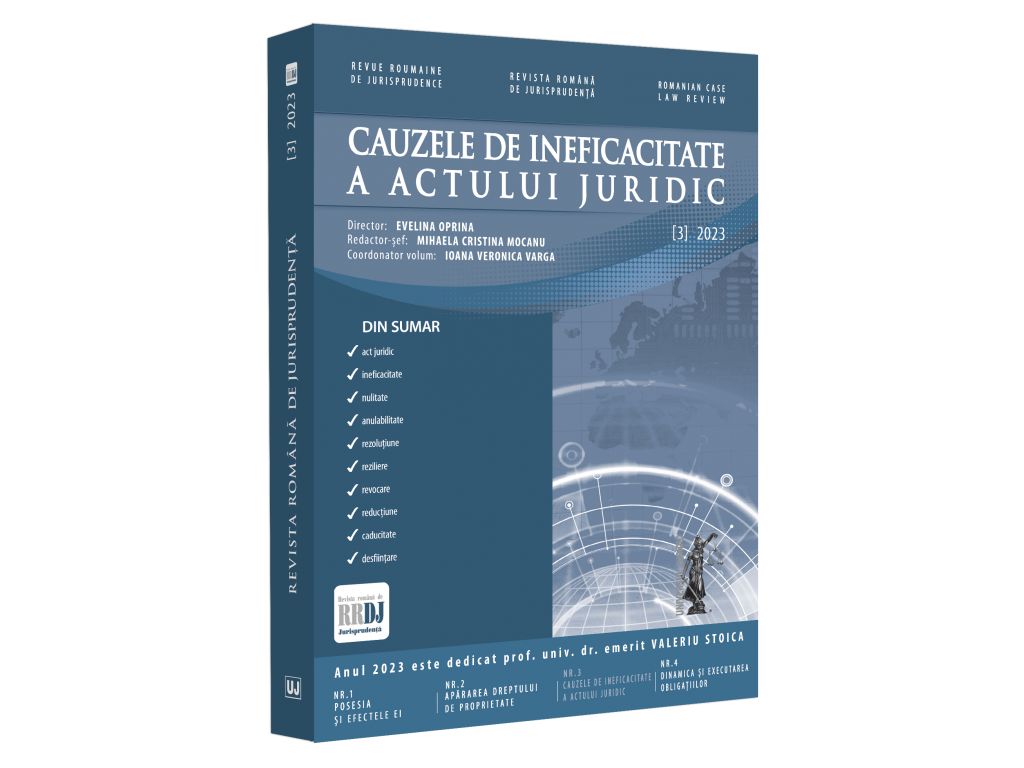Absolute nullity of the loan contract for illicit cause. Confirmatory act between the parties to the contract for the purpose of the subsequent conclusion of a fraudulent deed of gift in payment
JURISPRUDENŢĂ COMENTATĂ ŞI ADNOTATĂ
Abstract
A confirmatory deed cannot be confused with a loan contract proper, which, in order to be proved unequivocally and to be enforceable against the third party in the form intended – a deed of guarantee – had to take the form prescribed by law.
Thus, proof of the loan contract requires the existence of a written document, at least under private signature, setting out for each transaction the amount borrowed, the repayment term and the conditions of the loan. Moreover, given the nature of the loan as a real contract, it is necessary, for each individual amount borrowed, to provide clear evidence of the material remittance of the sum to the borrower, without which the very existence of the obligation to repay, i.e. the existence of the loan contact, is called into question.
In the present case, the contracting parties did not plead any moral or material impossibility of pre-constructing the actual loan documents, especially since there was no impediment to the conclusion of a confirmatory deed, which in practice is more difficult to obtain than the conclusion of an actual loan contract before or at the same time as the remittance of the sums.
This act (confirmatory – no.), produces effects between the parties, namely the lender and the borrower, who, on the basis of this agreement, which arose after the granting of each loan, acknowledge their debts and pay each other the amounts previously agreed, but in order for this agreement to be enforceable against a third party, as was sought in the present case by the deed of assignment, it is necessary, in relation to the latter and in order to protect his legitimate interests, to prove clearly and unequivocally each loan individually, in both respects, the private deed and the material remittance of each amount borrowed.
The loan agreement, the existence of which has not been proved, and the deed of payment prove, in the present case, the existence of an unlawful cause, since the sole purpose for which the two deeds were concluded was to prevent or substantially hinder the set-off or partial settlement of the debt claimed in the case.
The absolute nullity of the loan agreement for failure to prove its existence and for unlawful cause naturally entails the absolute nullity of the act of lending, which could only be based on a legal and valid loan agreement, which has not been proven.








